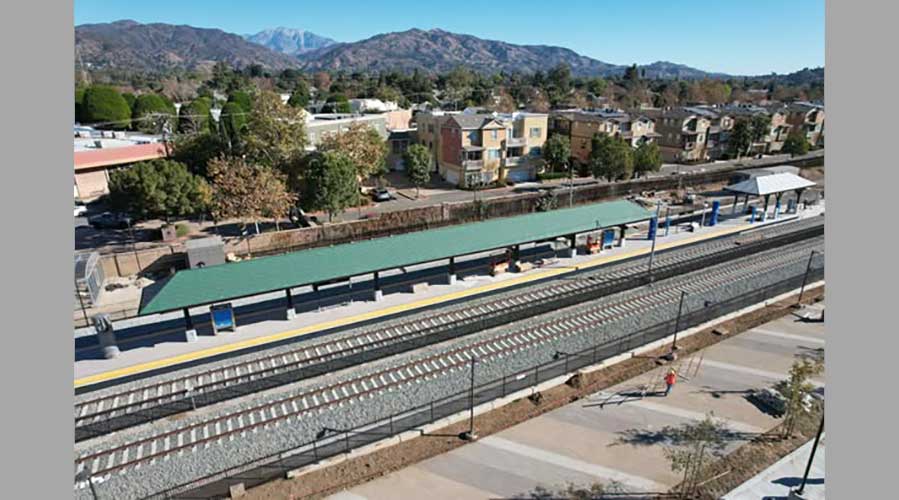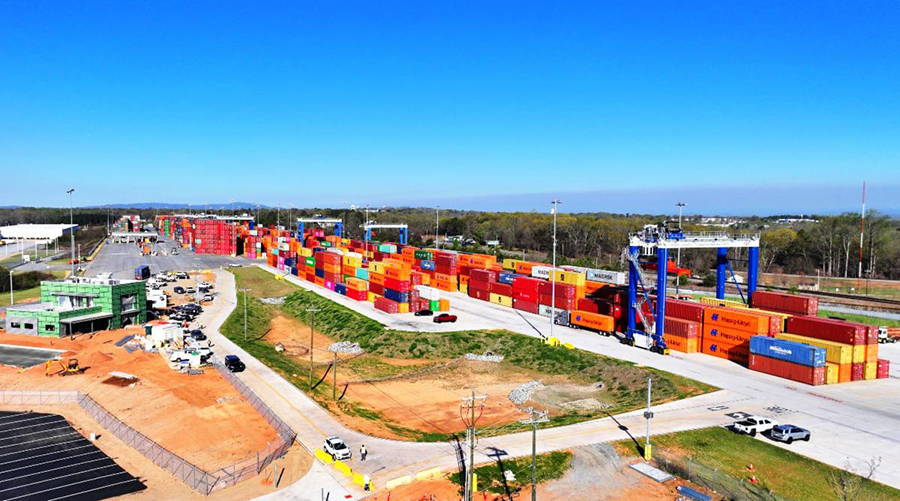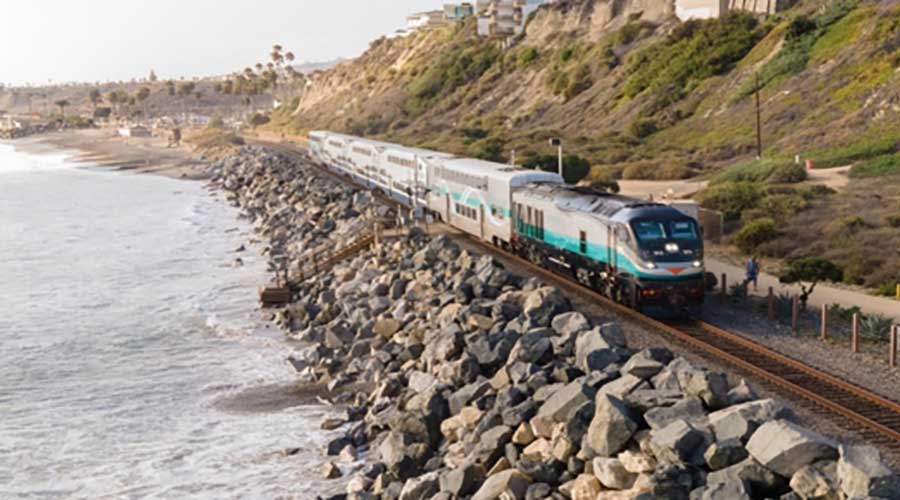Newsletter Sign Up
Stay updated on news, articles and information for the rail industry
Stay updated on news, articles and information for the rail industry
Rail News Home
Rail Industry Trends
Rail News: Rail Industry Trends
4/30/2003
Rail News: Rail Industry Trends
E-Buzz: Oasis Users Group meeting suggests rails working the Web to boost productivity - commentary from rail industry analyst Tony Hatch
advertisement
I recently had the pleasure of sitting in at an Oasis Users Group meeting in the beautiful Hill Country near Austin, Texas, listening to real railroaders and intermodalists talk about their successes and frustrations in using Optimization Alternatives Ltd. Inc.'s (OA) intermodal terminal management software. It reminded me that, after the e-commerce bubble and panic, after the hype and glory, the billionaires and bankruptcies, there was indeed some meaningful work done by those seeking to harness 21st century technology for the 19th century iron horse.
I shouldn't have doubted this, of course, but it took listening in the back of the room to stimulate me to make a few calls and see what was going on with some of the ventures we'd once been familiar with — the headline grabbers in rails' brief Internet "mania." I was pleased to hear from Cary, N.C., that the industry's own effort, Steelroads, was still making solid progress, and that Arzoon Inc. out of the Silicon Valley gold rush was still hard at work.
For its part, the privately held OA was never one of those late-1990s Internet startups — its origins trace back to 1986. Conrail was OA's first major customer, followed by Union Pacific Railroad. OA's major product is Oasis, an execution, data and capacity-management system. What was incredibly interesting at the users meeting was that the technology has been embraced, to varying degrees, by UP and Burlington Northern Santa Fe and Canadian National Railway Co. and Canadian Pacific Railway. Participants shared experiences that could serve to help all, even their sworn competitors (though intermodalists know better than most that the highway is the true direction of attack).
What's also interesting is that Oasis has not been embraced by Norfolk Southern Railway or CSX Transportation, the "parents" of first-user Conrail (although the former was solidly present at the meeting). OA's customers also include Florida East Coast Railway, entities in Australia, and port and terminal operators (many of whom were present). This was no sponsored love-in; it was a real meeting. Customers offered complaints of clunkiness, as Oasis is not Web-based in origin, although OA managers described their new efforts to promote user-friendliness through Vantage, Oasis' latest version. I saw an interesting demonstration of OARail (formerly Yardhawk), OA's effort to move from the complicated world of terminal and intermodal management to the even more complicated one of yard and carload. That could be a big step for this company. However, I left Austin impressed not only with the barbecue but with users' claims that Oasis justified its investment in terms of capacity freed and capital avoided — and, in some cases, headcount reduction — all of which warms an analyst's cold, cold heart.
Meanwhile, my old friends at Railinc, the Association of American Railroads' independent technology effort in North Carolina, have brought Steelroads back into the forefront, and are attempting to make "Powered by Steelroads" — multiple portals for rail users to access common data — the transportation equivalent of Intel's ubiquitous brand. Railinc has retired its NetRedi brand, in favor of Steelroads Track & Trace, which can be accessed through any carrier's Web site. That's key: Rails have always provided reams (and reams and reams) of data, and now it can be accessed through whatever means best suits the user. It's all Web based (and Web originated), and is in an Application Service Provider format — Railinc hosts the data and software in Cary, and the user can access the data and the functionality in Omaha, Jacksonville or the Upper West Side. Third parties such as Arzoon (see below) are being courted and encouraged.
In addition, Railinc/Steelroads folks are very excited about RailSync, a new product designed for short lines. This puts Railinc in "co-opitition" with customers such as Railcar Management Inc., Electro-Motive Division of General Motors Corp.'s Intellitrans and others, as well as the individual carriers themselves (although having RailAmerica Inc., North America's largest short-line holding company by far, for its first customer is a good start ). Railinc used the BNSF model for short-line applications, using a "best of breed" mentality in what used to be a "not invented here" railroad world. I would need to visit with the folks I worked with on the "E Team" to learn more about Steelroads' evolution ... but it's been great to see the story move from birth to information mainstay in just a few years.
Meanwhile, Arzoon, fresh off another fundraising round this past winter (venture-capital based, not further investment from UP, CPR, NS and CSX), now has seven customers up and running and "a very strong pipeline," says Joan Harvieux, general manager, rail solutions. Arzoon offers a global trade piece and a transportation management system (TMS) — probably the only one that's fully rail-functional (the vast, vast majority of TMS offerings are truck, ocean, or air originated and biased). Arzoon version 6.0 is filling in the transportation gaps (in less-than-truckload to truckload conversion and ocean booking) to close up to the competition (internal efforts, or the trio of i2 Technologies Inc., Vastera Inc. and Manugistics Group Inc.), and is proving to be a survivor.
— Tony Hatchhas been a senior transportation analyst on Wall Street for 16 years, starting at Salomon Brothers, proceeding to Argus, PaineWebber, and most recently at NatWest Markets (USA) prior to becoming an independent analyst/consultant at the latter's closing of operations.
I shouldn't have doubted this, of course, but it took listening in the back of the room to stimulate me to make a few calls and see what was going on with some of the ventures we'd once been familiar with — the headline grabbers in rails' brief Internet "mania." I was pleased to hear from Cary, N.C., that the industry's own effort, Steelroads, was still making solid progress, and that Arzoon Inc. out of the Silicon Valley gold rush was still hard at work.
For its part, the privately held OA was never one of those late-1990s Internet startups — its origins trace back to 1986. Conrail was OA's first major customer, followed by Union Pacific Railroad. OA's major product is Oasis, an execution, data and capacity-management system. What was incredibly interesting at the users meeting was that the technology has been embraced, to varying degrees, by UP and Burlington Northern Santa Fe and Canadian National Railway Co. and Canadian Pacific Railway. Participants shared experiences that could serve to help all, even their sworn competitors (though intermodalists know better than most that the highway is the true direction of attack).
What's also interesting is that Oasis has not been embraced by Norfolk Southern Railway or CSX Transportation, the "parents" of first-user Conrail (although the former was solidly present at the meeting). OA's customers also include Florida East Coast Railway, entities in Australia, and port and terminal operators (many of whom were present). This was no sponsored love-in; it was a real meeting. Customers offered complaints of clunkiness, as Oasis is not Web-based in origin, although OA managers described their new efforts to promote user-friendliness through Vantage, Oasis' latest version. I saw an interesting demonstration of OARail (formerly Yardhawk), OA's effort to move from the complicated world of terminal and intermodal management to the even more complicated one of yard and carload. That could be a big step for this company. However, I left Austin impressed not only with the barbecue but with users' claims that Oasis justified its investment in terms of capacity freed and capital avoided — and, in some cases, headcount reduction — all of which warms an analyst's cold, cold heart.
Meanwhile, my old friends at Railinc, the Association of American Railroads' independent technology effort in North Carolina, have brought Steelroads back into the forefront, and are attempting to make "Powered by Steelroads" — multiple portals for rail users to access common data — the transportation equivalent of Intel's ubiquitous brand. Railinc has retired its NetRedi brand, in favor of Steelroads Track & Trace, which can be accessed through any carrier's Web site. That's key: Rails have always provided reams (and reams and reams) of data, and now it can be accessed through whatever means best suits the user. It's all Web based (and Web originated), and is in an Application Service Provider format — Railinc hosts the data and software in Cary, and the user can access the data and the functionality in Omaha, Jacksonville or the Upper West Side. Third parties such as Arzoon (see below) are being courted and encouraged.
In addition, Railinc/Steelroads folks are very excited about RailSync, a new product designed for short lines. This puts Railinc in "co-opitition" with customers such as Railcar Management Inc., Electro-Motive Division of General Motors Corp.'s Intellitrans and others, as well as the individual carriers themselves (although having RailAmerica Inc., North America's largest short-line holding company by far, for its first customer is a good start ). Railinc used the BNSF model for short-line applications, using a "best of breed" mentality in what used to be a "not invented here" railroad world. I would need to visit with the folks I worked with on the "E Team" to learn more about Steelroads' evolution ... but it's been great to see the story move from birth to information mainstay in just a few years.
Meanwhile, Arzoon, fresh off another fundraising round this past winter (venture-capital based, not further investment from UP, CPR, NS and CSX), now has seven customers up and running and "a very strong pipeline," says Joan Harvieux, general manager, rail solutions. Arzoon offers a global trade piece and a transportation management system (TMS) — probably the only one that's fully rail-functional (the vast, vast majority of TMS offerings are truck, ocean, or air originated and biased). Arzoon version 6.0 is filling in the transportation gaps (in less-than-truckload to truckload conversion and ocean booking) to close up to the competition (internal efforts, or the trio of i2 Technologies Inc., Vastera Inc. and Manugistics Group Inc.), and is proving to be a survivor.
— Tony Hatchhas been a senior transportation analyst on Wall Street for 16 years, starting at Salomon Brothers, proceeding to Argus, PaineWebber, and most recently at NatWest Markets (USA) prior to becoming an independent analyst/consultant at the latter's closing of operations.


 LRW Honors Amtrak’s Acheson As Railway Woman Of The Year
LRW Honors Amtrak’s Acheson As Railway Woman Of The Year
 From Editor-In-Chief Foran: Of Gender Equity And Inclusion
From Editor-In-Chief Foran: Of Gender Equity And Inclusion
 Spotlight On Some Of Today’s Rail Safety Products
Spotlight On Some Of Today’s Rail Safety Products
 Women of Influence in Rail eBook
Women of Influence in Rail eBook
 railPrime
railPrime








